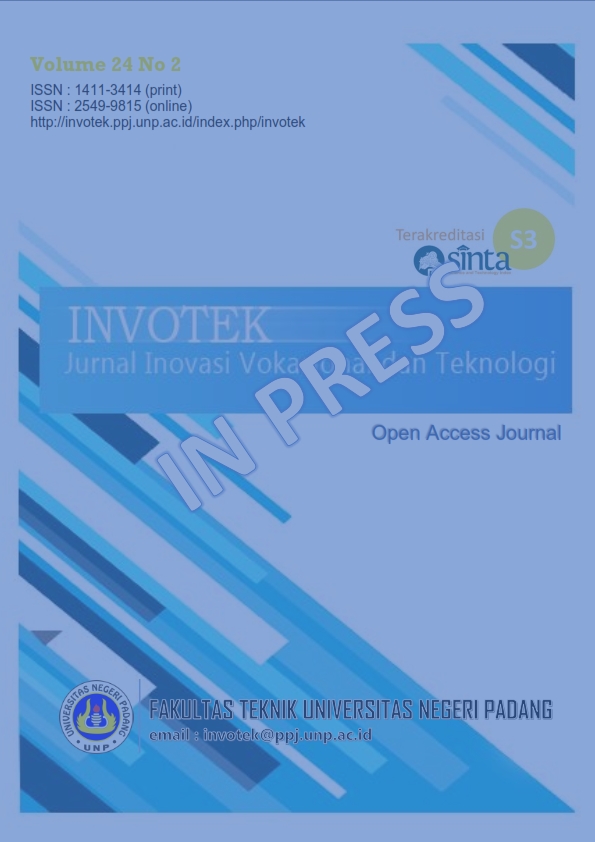Main Article Content
Abstract
Technological advancements have encouraged businesses to optimize data utilization, including in sales analysis. This study analyzes sales transaction data of tobacco products at Tobacco Shop Taste using the K-Means Clustering method. By implementing the Cross-Industry Standard Process for Data Mining (CRISP-DM) framework, the sales data were categorized into three groups: highly sold, moderately sold, and less sold. These clustering results support stock management, marketing strategies, and data-driven decision-making. A web-based system was developed, providing real-time monitoring of analysis results, which distinguishes this study from existing solutions by enabling store management to promptly respond to sales trends. This study significantly contributes to the application of data mining technology in the tobacco retail sector, despite being limited to a single store and basic variables. Future development opportunities include integrating broader datasets and analyzing external variables to enhance the accuracy and relevance of the findings.
Keywords
Article Details

This work is licensed under a Creative Commons Attribution 4.0 International License.
Copyright (c): Yance Sonatha, Aldo Erianda, Redhatul Fitri (2025)References
- S. D. Golden et al., “Trends in the Number and Type of Tobacco Product Retailers, United States, 2000–2017,” Nicotine Tob. Res., vol. 24, no. 1, pp. 77–84, Jan. 2022, doi: 10.1093/ntr/ntab150.
- Y. Bi et al., “Tobacco chemical value quantifying method based on near-infrared spectrum wave number K-means clustering.” 2015.
- W. S. Utami, N. Pratiwi, and F. Muhammad, “Penerapan Data Mining Menggunakan Algoritma K-Means Untuk Clustering Perokok Usia Lebih dari 15 Tahun,” Bull. Inf. Technol., vol. 4, no. 4, pp. 501–507, 2023, doi: https://doi.org/10.47065/bit.v4i4.1067.
- Z. Dzalilov and A. Bagirov, “Cluster analysis of a tobacco control data set,” Int. J. Lean Think., vol. 1, no. 2, pp. 40–50, 2010.
- H. Fan, C. Lu, and H. Chen, “Exploring the spatial agglomeration characteristics of cigarette brand sales in Guizhou province, China,” in 2017 6th International Conference on Agro-Geoinformatics, 2017, pp. 1–4. doi: 10.1109/Agro-Geoinformatics.2017.8047048.
- S. N. Wahyuni, N. N. Khanom, and Y. Astuti, “K-Means Algorithm Analysis for Election Cluster Prediction,” JOIV Int. J. Informatics Vis., vol. 7, no. 1, pp. 1–6, 2023, doi: http://dx.doi.org/10.30630/joiv.7.1.1107.
- R. F. Ramadhan, S. H. Wijoyo, and M. C. Saputra, “Penerapan Metode K-Means Clustering pada Ulasan Perumahan PT XYZ di Google Maps untuk Formulasi Strategi Bisnis dengan Analisis SWOT,” J. Pengemb. Teknol. Inf. dan Ilmu Komput., vol. 7, no. 6, pp. 2879–2888, 2023.
- M. Ridzki, I. Hadijah, M. Mukidin, A. Azzahra, and A. Nurjanah, “K-Means algorithm method for clustering best-selling product data at XYZ grocery stores,” Int. J. Soc. Serv. Res., vol. 3, no. 12, pp. 3354–3367, 2023, doi: https://doi.org/10.46799/ijssr.v3i12.652.
- Z. Potton and B. Baharuddin, “MARKET SEGMENTATION ANALYSIS TO INCREASE THE EFFECTIVENESS OF MARKETING STRATEGIES,” IJMA (Indonesian J. Manag. Accounting), vol. 5, no. 1, pp. 242–248, 2024, doi: https://doi.org/10.14421/EkBis.2022.6.1.1555.
- J. Laurenso, D. Jiustian, F. Fernando, V. Suhandi, and T. H. Rochadiani, “Implementation of K-Means, Hierarchical, and BIRCH Clustering Algorithms to Determine Marketing Targets for Vape Sales in Indonesia,” J. Appl. Informatics Comput., vol. 8, no. 1, pp. 62–70, 2024, doi: https://doi.org/10.30871/jaic.v8i1.4871.
- A. Y. N. Harahap, R. E. Sari, H. Gunawan, and A. Buyung, “Evaluation of Product Sales Data Using Clustering Method and Hierarchical Divisive Clustering at PT. AYN,” 2024, doi: https://doi.org/10.55927/marcopolo.v2i7.10442.
- G. Nathiya, S. C. Punitha, and M. Punithavalli, “An analytical study on behavior of clusters using k means, em and k* means algorithm,” arXiv Prepr. arXiv1004.1743, 2010.
- W. A. Barbakh, Y. Wu, C. Fyfe, W. A. Barbakh, Y. Wu, and C. Fyfe, “Review of clustering algorithms,” Non-standard Param. Adapt. Explor. data Anal., pp. 7–28, 2009, doi: https://doi.org/10.1007/978-3-642-04005-4_2.
- B. I. Nugroho, A. Rafhina, P. S. Ananda, and G. Gunawan, “Customer segmentation in sales transaction data using k-means clustering algorithm,” J. Intell. Decis. Support Syst., vol. 7, no. 2, pp. 130–136, 2024, doi: https://doi.org/10.35335/idss.v7i2.236.
- Yosia and B. Siregar, “Comparative Analysis of K-Means and K-Medoids Algorithms for Product Sales Clustering and Customer,” J. Math. Comput. Stat., vol. 7, no. 2, pp. 360–370, 2024, doi: https://doi.org/10.35580/jmathcos.v7i2.4053.
- H. Han and J. Zhang, “Application of AHP and clustering, discriminant analysis in categorization of cigarette retailers,” 2014.
- V. Prasad and T. Srikanth, “A survey on clustering algorithms and their constraints,” Int. J. Intell. Syst. Appl. Eng., no. 11, pp. 165–179, 2023.
- Mrs. J. Sirisha, V. Lakshmi Prathyusha, P. Naga Anupriya, M. Suma Sri, and P. Naga Hema, “Customer Segmentation using K-Means Clustering,” Int. J. Adv. Res. Sci. Commun. Technol., vol. 2, no. 3, pp. 170–175, 2022, doi: 10.48175/ijarsct-7618.
- D. B. Saputra, V. Atina, and F. E. Nastiti, “PENERAPAN MODEL CRISP-DM PADA PREDIKSI NASABAH KREDIT MENGGUNAKAN ALGORITMA RANDOM FOREST,” Idealis Indones. J. Inf. Syst., vol. 7, no. 2, pp. 240–247, 2024, doi: https://doi.org/10.36080/idealis.v7i2.3244.
- N. Doede, P. Merkel, M. Kriwall, M. Stonis, and B.-A. Behrens, “Implementation of an intelligent process monitoring system for screw presses using the CRISP-DM standard,” Prod. Eng., pp. 1–12, 2024, doi: https://doi.org/10.1007/s11740-024-01298-8.
- R. H. Bemthuis, R. R. Govers, and A. Asadi, “A CRISP-DM-based Methodology for Assessing Agent-based Simulation Models using Process Mining,” arXiv Prepr. arXiv2404.01114, 2024, doi: https://doi.org/10.48550/arXiv.2404.01114.
- Y. A. Singgalen, “Penerapan CRISP-DM dalam Klasifikasi Sentimen dan Analisis Perilaku Pembelian Layanan Akomodasi Hotel Berbasis Algoritma Decision Tree (DT),” J. Sist. Komput. dan Inform. Hal, vol. 237, p. 248, 2023, doi: 10.30865/json.v5i2.7081.
